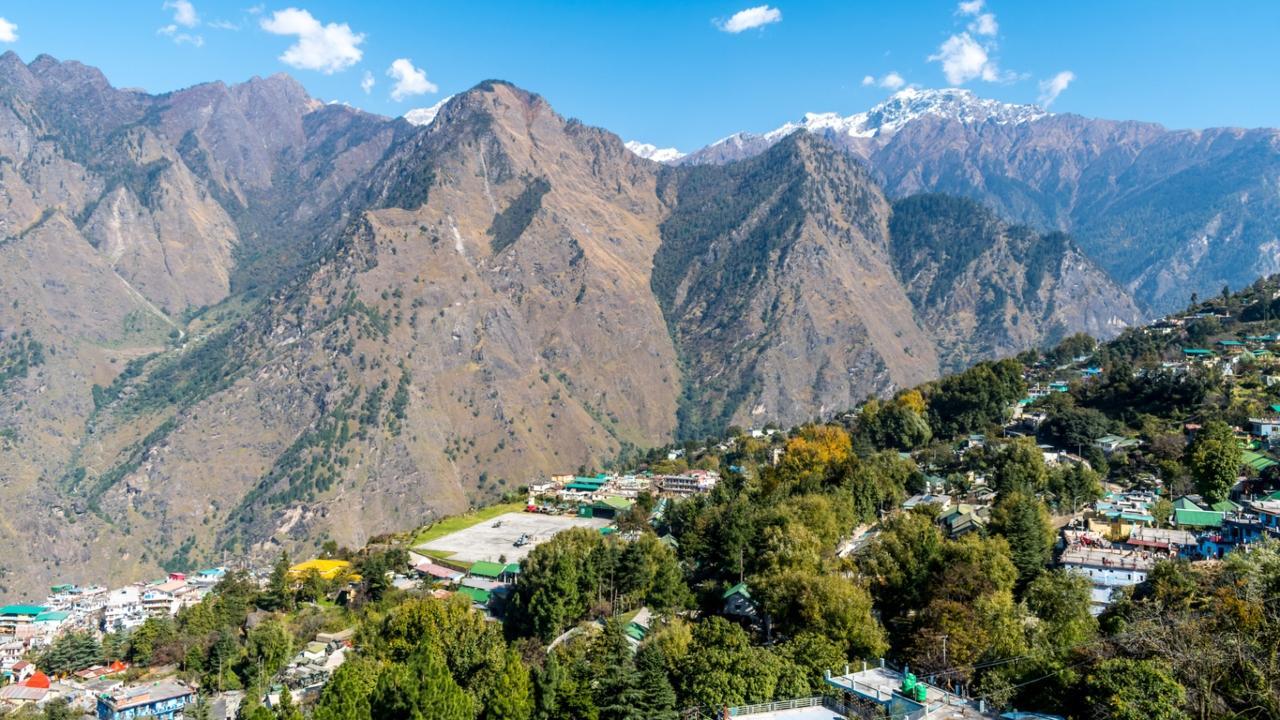The chilling visuals emerging from Joshimath should act as a wake-up call for town planners and civic authorities in other Indian hill stations, including Maharashtra’s favourite hotspots like Lonavala, Khandala and Matheran

Representation pic
 Call it the Stuck-Record Syndrome but I have a weakness for finding the slightest excuse to reminisce about my adventure when I had to interview Ruskin Bond exactly seven years ago in his home in Landour. Needless to say, that meeting remains one of my most memorable interactions as a journalist. But I am getting carried away. Because this time, with Joshimath being in the news for all the wrong reasons, my reference to that visit does not have a picturesque ending.
Call it the Stuck-Record Syndrome but I have a weakness for finding the slightest excuse to reminisce about my adventure when I had to interview Ruskin Bond exactly seven years ago in his home in Landour. Needless to say, that meeting remains one of my most memorable interactions as a journalist. But I am getting carried away. Because this time, with Joshimath being in the news for all the wrong reasons, my reference to that visit does not have a picturesque ending.
ADVERTISEMENT
As the car wormed its way to Landour, circling the hilly, craggy terrain of the lower Himalayas, my heart was in my mouth. Not meant for the faint-hearted or the vertigo-inflicted, our gasps of fear were interspersed with the wows of soaking in the beyond-stunning views. The beauty of this mountainous region needs to be experienced in all its rugged character, and one visit to this magical ecosystem is never enough. Interview done, Mr Bond chuckled when I asked him my last question before his lunch hour beckoned, “What keeps you ticking…to write with such enthusiasm, after all these decades?” After letting out a long, almost childlike laugh, he shared, “Look outside this window…” drawing our attention to the scenic, green-topped gradient hillside view from his study, “Who needs any more inspiration? It’s this fresh mountain air.” But that’s where our dreamy, mountain-inspired script began and ended.
Also Read: Officials must ensure repaired roads stay intact
A couple of days before, when we landed at Dehradun airport, and were still recovering from the breathtaking views of the Himalayas that our tiny aircraft window could squeeze in, we were also witness to the disappointing contrast when we hit the ground. We didn’t do the usual touristy things in Dehradun but had a fair look at the town’s streetscape, including spotting Pratap, the popular music store that The Beatles’s frequented during their musical pilgrimage in Rishikesh, or Ellora, the popular confectionery and bakery. Somehow, it was the eyesores that stayed in our head—from haphazardly placed hoardings screaming in our face about the newest ‘international’ schools and new villas boasting of English ‘country’ life, to unplanned, reckless development, poorly built roads and precariously standing hotels and guesthouses that were literally tipping over. I was in shock. This wasn’t the ‘hill station’ that I had seen on the telly, glamourised in Hindi film song sequences and on travel shows. There was nothing charming or quaint in sight; in fact, far from the usual set of adjectives used to describe hill stations, I found myself repeating words like ‘shoddy’, ‘ugly’ and ‘crowded’. The mighty Himalayas were lost behind the larger-than-life signboards that greeted me at every corner and bend. It didn’t end with the main town; even on the outskirts, we were horrified to spot badly planned structures that did not show respect to the natural beauty of the area. It was a hill station only in name.
Closer home, flashy resorts and ‘Bali-style’ bungalows seem to be moving closer to heaven [we mean higher along the Sahyadris ranges] in the twin hill stations of Lonavala and Khandala each time we hit the Mumbai-Pune Expressway. At the receiving end of unchecked, mindless construction for decades now, I am unsure if environmental guidelines were ever in place. Even as you walk through the crowded bazaars and pathways in these hill stations, there is a sense that the environment is provably the last thing on the minds of its civic authorities.
Likewise with Matheran, the getaway that takes one of a nostalgic, slo-mo trip, thanks to the toy train journey all the way to the top. Here, locals are fighting tooth and nail to keep this precious land safe, considering it remains India’s only motor vehicle-free hill station. For how long, only the Gods can tell.
At the cost of sounding alarmist, the horrifying and heart-tugging scenes emerging from Joshimath could be played out in any badly planned Indian hill station today. Every day shocking details emerge of local residents having to leave their own homes, at the risk of no return. How did it come to such an Apocalypse-like scenario? Devious, selfish commercial interests and infrastructure projects seem to be the root cause here, going by facts and data that are trickling down. We can hope that it acts as a wake-up call for town planners elsewhere who continue to disrupt the topography of these sensitive, fragile ecosystems. The doomsday-esque slant of this column might have ruined your Monday morning brekkie, I suspect.
The scary possibility could be lurking in our backyard, and it’s a worrying scenario. The heavy rainfall and landslides that follow, is enough reason to take note of possible eventualities. Unless the authorities wake up and resort to effective, eco-friendly and long-term solutions with the help of experts, and ensure these plans are executed quickly, the coming generations might find it hard to believe that Khandala or Lonavala were hill stations at one point.
mid-day’s Features Editor Fiona Fernandez relishes the city’s sights, sounds, smells and stones...wherever the ink and the inclination takes her. She tweets @bombayana
Send your feedback to mailbag@mid-day.com
 Subscribe today by clicking the link and stay updated with the latest news!" Click here!
Subscribe today by clicking the link and stay updated with the latest news!" Click here!







